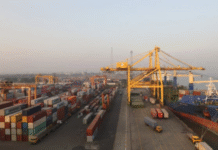Kavaljit Singh in New Delhi
Brazil will host the leaders of Russia, India, China, and South Africa for the 2014 BRICS Summit during July 15-17, 2014. This BRICS summit is expected to launch the $100 billion Contingency Reserve Arrangement (CRA) and further details on soon to be established BRICS Development Bank will be unveiled.
In June 2012, Brazil had proposed the establishment of a BRICS contingent reserve pool and bilateral swap arrangement which could ease short-term liquidity pressures and strengthen financial stability in the event of a balance of payments or currency crisis. It was at the Durban Summit (2013), the BRICS Leaders decided to create a US$ 100 billion CRA to tackle any potential financial crisis.
Currently, the central banks of BRICS are working on the modalities and operational aspects of the CRA. Unlike the BRICS Bank, the self-managed CRA could come into operation soon once BRICS Leaders reach on a final agreement in Fortaleza (Brazil).
Alternative financial architecture
It is important to note that the CRA will only come into operation when a member-country faces an imminent financial crisis. In normal times, each member-country of BRICS will keep the funds’ reserve in its forex reserves kitty. Currently BRICS countries hold $4.4 trillion in foreign-currency reserves.
The establishment of Contingent Reserve Arrangement (CRA) of $100 billion looks very promising as we are living in a post-crisis world full of financial risks and shocks. It offers a rare opportunity to reshape the global financial architecture by providing concrete financial mechanism of $100 billion to BRICS (possibly to other poor and developing countries as well) which may suddenly face a balance of payments or liquidity crisis. The proposed CRA could potentially sow the seeds of an alternative financial architecture if it could expand its mandate and reserve pool.
Few can dispute the fact that such an alternative arrangement was badly needed as poor and developing countries had no option but to accept the misdiagnoses and harsh conditionalities of the IMF which provoked huge public outcry and bitter resentment in the 1980s and 90s.
The relevance of CRA becomes even more important in the present financial landscape dominated by Western institutions and banks. Thus, the potential of CRA (and BRICS Bank) in altering the present unequal power relations in the financial world cannot be denied. However, it is important to emphasize that whether these instruments can really fulfill potential roles would be primarily judged by their official mandate, policy framework, governance and the operational aspects.
Unpalatable CMI experience
At the same time, one cannot ignore the fact that reserve arrangements similar to the BRICS CRA currently exist, are inoperative and have not challenged the hegemony of the IMF. In the aftermath of Asian financial crisis of 1997-98, Asian countries (ASEAN plus China, Japan and South Korea) launched the Chiang Mai Initiative (CMI) to develop a self-managed reserve pooling arrangement and a regional financial safety net which could provide immediate liquidity support to member-countries in the event of a balance of payments or liquidity crisis. The CMI was the first regional currency swap arrangement launched with much fanfare in 2000.
However, it is surprising to note that not a single member-country facing an impending financial crisis of one sort or another has, so far, opted for this regional financial safety net. This is despite the fact that the size of reserve pool of the CMI has been substantially expanded over the years (currently at $240 billion) and new facilities on crisis prevention and resolution have been added. Many of its member-countries (for example, Indonesia and Philippines) are more vulnerable to liquidity shocks at present than in the past.
Therefore, the recent unappealing experience of CMI raises several pertinent questions which BRICS leaders cannot choose to ignore.
Courtesy: Countercurrents.org Kavaljit Singh works with Madhyam, a policy research institute based in New Delhi (www.madhyam.org.in).
Source: weekly holidya









